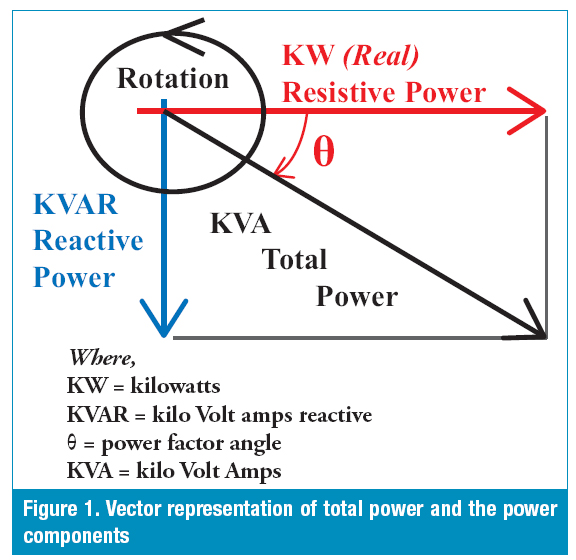Energy efficiency may not always mean total efficiency.
The Department of Energy (DOE) has adopted new energy conservation standards for electric motors. The DOE has determined these standards will result in a significant reduction of energy usage. Higher motor efficiency will result in lower billed power cost to the consumer, but may actually increase the energy use.
Motor Comparison
Take the case of these two 125-horsepower, 4-pole motors:
Motor W: nameplated NEMA nominal efficiency of 94.5% at 1,780 rpm, 3 Phase, 60 Hertz, 460 Volts.
Motor U: nameplated NEMA nominal efficiency of 95.4% at 1,785 rpm, 3 Phase, 60 Hertz, 460 Volts.
Which one will result in a significant conservation of total energy use?
Motor W: ≈ 109.950 kW energy usage: nameplated 94.5% efficiency
Motor U: ≈ 117.121 kW energy usage: nameplated 95.4% efficiency
Why does the motor with the lower efficiency use less energy?
Efficiency Definition
The difference in energy use between the two motors comes from the basic definition of efficiency. Efficiency is real input power divided by (total) output power. Efficiency is a measure to determine the cost of operating the motor. Surprisingly, we do not pay for the total power input, only the “real” component of power.
The total power of the AC induction (reactive) motor can be represented as a rotating vector summation of “real” power and “reactive” power (Figure 1).

Total Efficiency
Another term is needed: total efficiency, which is the total electrical input power divided by the total mechanical output power. For three-phase, AC induction motors:
Total electrical input power for three phase, AC induction motors = line to line voltage • line current • √3
For the example motors:
Total mechanical input power (converted to kilowatts) = HPout • 0.746 = 125 • 0.746 = 93.250 kW
To calculate the total electrical power input, additional nameplate information is needed to calculate KVA:
Motor W = 138 amps full load current: Total Power in = 460 • 138 • √3 / 1,000 ≈ 109.950 kW
Motor U = 147 amps full load current: Total Power in = 460 • 147 • √3 / 1,000 ≈ 117.121 kW
Presuming that both motors are operating at full, rated load, the total efficiency is:
Motor W “total” efficiency = 93.250/109.950 = 84.8%; but nameplated 94.5%
Motor U “total” efficiency = 93.250/117.121 = 79.6%; but nameplated 95.4%
Increasing the “real” efficiency actually increases the total energy use in this example. Ignoring the one time increase in energy to produce the additional materials required to increase efficiency, there is another probable increase in energy usage factor. Generally, extra high efficiency motors have less slip so the rated load is at a higher speed. For centrifugal type loads, the majority of AC motor applications, the driven equipment will draw more power, usually negating the higher efficiency.
The premium efficiency AC motor is a recommended purchase even with a premium price. A properly selected, installed and maintained motor will last for the lifetime of most applications. Efficiency stills determines the cost of operation, and the long life of the AC motor will, in all cases, shortly return the cost of investment and provide continued energy cost savings.
In addition, premium efficiency requires premium manufacturing process control. Premium manufacturing process control equates directly with increased application reliability.
For additional reference, see “Regulation by Free Market Forces or Bureaucracy.” Energy Independence and Security Act of 2007 (EISA).
Pumps & Systems, October 2011

